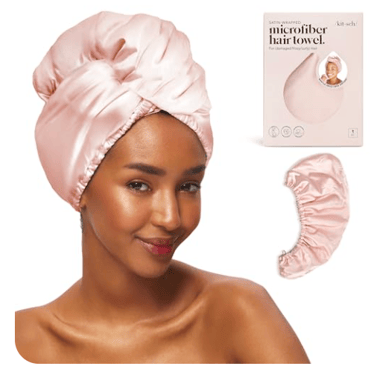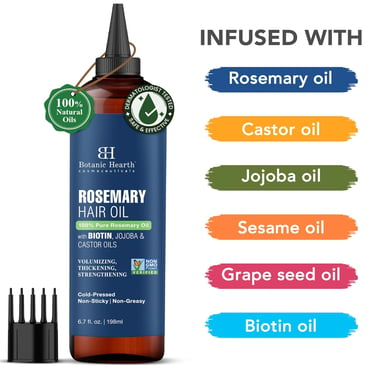The Effects of Climate Change on Hair Health: What You Need to Know
HAIRCARE
8/19/20254 min read


Climate change is usually discussed in terms of rising sea levels, melting ice caps, or endangered species but its effects are much closer to home than we often realize. Beyond the environment, shifting weather patterns, rising global temperatures, and worsening air pollution are also quietly reshaping our personal health including something as everyday as the health of our hair.
Most people don’t connect climate change with frizz, hair thinning, dryness, or scalp irritation. Yet, the truth is that our hair is extremely sensitive to environmental changes. From heat waves that strip moisture to pollution particles that clog follicles, the changing climate is leaving its mark strand by strand.
In this blog, we’ll explore exactly how climate change is affecting hair health, what problems it’s causing, and most importantly how you can adapt your routine to protect your locks.
🌡️ Rising Temperatures and Hair Damage
Dryness, Breakage, and Weakening
As global temperatures rise, extreme heat has become more common. While our bodies suffer from dehydration during heatwaves, our hair does too. High heat strips hair of its natural oils, leading to dryness, brittleness, and breakage.
Your scalp also reacts overproducing oil to make up for lost moisture. This often results in clogged follicles, dandruff, irritation, or even slowed hair growth.
Fading Color and UV Damage
Heat isn’t the only culprit. Stronger UV rays caused by climate change break down keratin proteins and pigment molecules in hair. For those with dyed hair, this means faster color fading, dullness, and the need for more frequent touch-ups. Even natural hair tones can lighten and weaken under prolonged sun exposure.
💡 Tip: Use UV-protectant sprays or wear hats outdoors to minimize sun-related damage.
💧 Humidity and Its Double-Edged Effect
The Frizz Factor
Rising global humidity levels make hair fibers swell and disrupt the smooth cuticle layer. The result? Frizz, puffiness, and lack of shine especially for curly or wavy hair.
Even straight hair can become limp or “poofy” in humid conditions, losing its smoothness.
Overhydration and Fragility
While dry heat causes brittleness, excess moisture makes hair too soft and elastic. This weakens the strands and makes them more prone to snapping during brushing or styling. Essentially, hair can be “over-hydrated” in a humid climate.
💡 Tip: Lightweight anti-frizz serums and humidity-resistant styling products help seal the cuticle and protect against swelling.
🌫️ Air Pollution and Scalp Health
Pollutants on the Scalp
Urban smog, dust, and carbon emissions are on the rise due to climate change. These particles settle on the scalp and hair, blocking follicles and interfering with natural oil balance. Over time, this leads to:
Dull, lifeless hair
Itchy, irritated scalp
Thinning and hair loss due to clogged follicles
Free Radical Damage
Air pollutants also release free radicals, which attack keratin (the protein that makes up hair). This causes premature hair aging, faster thinning, and increased breakage.
💡 Tip: Use clarifying shampoos or anti-pollution hair care products weekly to remove buildup and protect scalp health.
🧠 The Psychological Impact: Stress and Hair Loss
Climate Anxiety and Hair Shedding
Extreme weather events and rising eco-anxiety also take a toll on mental health. Stress releases cortisol, which disrupts the natural hair growth cycle and can trigger telogen effluvium a condition where hair enters the shedding phase too early.
Hair-Pulling and Anxiety
In some cases, stress linked to climate concerns can trigger trichotillomania, a compulsion to pull hair out. While psychological, it worsens visible thinning and damages scalp health.
💡 Tip: Stress management through mindfulness, exercise, and scalp massages can improve both mental and hair health.
🛡️ How to Protect Your Hair from Climate Change
While we can’t stop global warming individually, we can build stronger hair-care defenses against environmental stressors:
Hydration is Key – Use moisturizing shampoos, leave-in conditioners, and natural oils (like argan or jojoba) to lock in hydration.
UV Protection – Spray-on SPF for hair or simple protective hats prevent color fading and heat damage.
Anti-Pollution Care – Switch to products that create a barrier against smog and environmental toxins. Look for labels with antioxidants or “anti-pollution.”
Limit Heat Styling – Avoid excessive blow-drying, flat-ironing, or curling during already hot weather. Opt for air-drying or heatless styling.
Nutrition Matters – Eat a diet rich in vitamin E, omega-3s, and biotin to boost hair strength from within.
Stress Reduction – Scalp massages, relaxation techniques, and even aromatherapy can reduce stress-related shedding.
Conclusion
Climate change may feel like a distant global issue, but its effects are personal, right down to the health of our hair. From heat and humidity damage to pollution buildup and stress-related shedding, our strands are quietly suffering the consequences of a changing planet.
The good news? With the right awareness and a climate conscious haircare routine, you can protect your locks, maintain their strength, and keep them looking vibrant no matter what the forecast brings.

Botanic Hearth 100% Pure Rosemary Oil For Hair Growth (6.7 fl oz) Infused With Biotin, Jojoba & Castor Oil | Hair strengthening Treatment | Nourishing & Volumizing | Non GMO Verified
HAIRCARE
HAIRCARE
HAIRCARE
7MAGIC 7 in 1 Hair Styler & Hair Dryer Brush, 110,000 RPM High-Speed Blow Dryer with Negative Ions for Frizz-Free Styling Fast Drying Curling Volumizing Straightening, Hot Air Styler with Travel Case
Kitsch Microfiber Hair Towel Wrap for Women - Quick Dry Hair Wrap Towel After Shower | Microfiber Towel for Hair | Hair Drying Towel Wrap | Hair Towels | Head Towel Wraps for Women (Satin Blush)
BESTSELLERS
NEW COLLECTION






🌸 Dazzlea Beauty
Dazzlea Beauty is your ultimate destination for everything that celebrates beauty, confidence, and self expression. We bring you a world of skincare, nails, hair, and makeup inspiration designed to help you embrace your individuality and glow with confidence. Whether you’re seeking everyday essentials to elevate your natural look or bold new styles that make a statement, Dazzlea Beauty is here to guide you every step of the way. Our mission is to inspire, empower, and provide you with the beauty tips, trends, and updates you need to feel radiant inside and out.
Join our community for beauty insights.
Contact Us
📧 info@dazzleabeauty.com
© 2025. All rights reserved.
🌐 Follow Us
Stay connected for beauty tips
